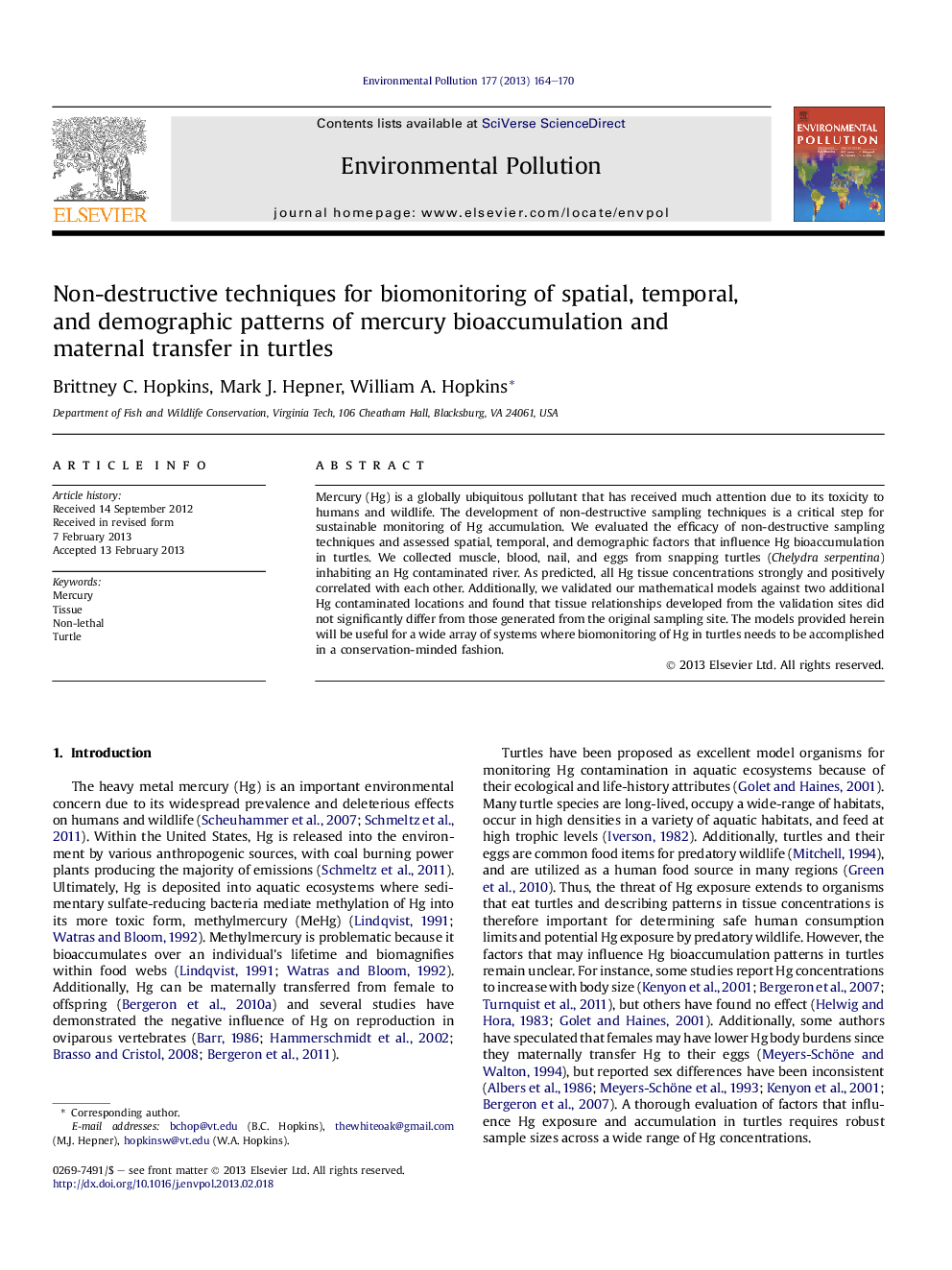| Article ID | Journal | Published Year | Pages | File Type |
|---|---|---|---|---|
| 4424625 | Environmental Pollution | 2013 | 7 Pages |
Mercury (Hg) is a globally ubiquitous pollutant that has received much attention due to its toxicity to humans and wildlife. The development of non-destructive sampling techniques is a critical step for sustainable monitoring of Hg accumulation. We evaluated the efficacy of non-destructive sampling techniques and assessed spatial, temporal, and demographic factors that influence Hg bioaccumulation in turtles. We collected muscle, blood, nail, and eggs from snapping turtles (Chelydra serpentina) inhabiting an Hg contaminated river. As predicted, all Hg tissue concentrations strongly and positively correlated with each other. Additionally, we validated our mathematical models against two additional Hg contaminated locations and found that tissue relationships developed from the validation sites did not significantly differ from those generated from the original sampling site. The models provided herein will be useful for a wide array of systems where biomonitoring of Hg in turtles needs to be accomplished in a conservation-minded fashion.
► Non-lethal sampling is critical for sustainable monitoring of mercury in wildlife. ► We evaluated the efficacy of non-lethal sampling techniques in turtles. ► We created mathematical models between egg, muscle, blood, and nail tissues. ► Mathematical tissue models were applicable to other mercury contaminated areas. ► Non-lethal techniques will be useful for monitoring contamination in other systems.
